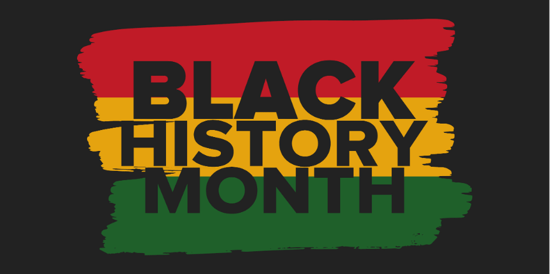What is Black History Month & Why is it Important?
1st October every year marks the beginning of Black History Month. Historically, many Black innovators and leaders across STEM, business, politics, healthcare, sport, art and all sectors have not received the recognition they deserve. BHM serves to highlight the amazing achievements of Black people throughout history and recent decades.

During Black History Month – and all year round! – we’re raising awareness of and celebrating the contributions made to society by some of the most accomplished Black tech pioneers.
Who Are Examples of Black Tech Innovators? Top 10 Black Technology Pioneers
-
Dr Philip Emeagwali
Increasingly recognised as the ‘Bill Gates of Africa’, Dr Emeagwali won the Nobel Prize for Computing by inventing the programming and formula for the world’s fastest computer. The Connection Machine solved one of the oldest mathematics problems in history and made vital discoveries, including how the Earth’s interior causes volcanic eruptions, how polluted groundwater flows and how to recover petroleum more safely.
Born in Nigeria in 1954, Emeagwali mastered calculus at the age of 14 and frequently outwitted his teachers. Forced to leave school when his family could no longer afford the fees, he persevered with self-study, winning a scholarship and earning three master’s degrees and a doctorate in Scientific Computing. His work on the Connection Machine won Emeagwali a wealth of accolades, including:
- The Nigeria Prize
- The Nigeria Achiever Award
- The National Society of Black Engineers’ Scientist of the Year and Pioneer of the Year
- The National Society of Black Engineers in America’s Distinguished Scientist of the Year, and most notably,
- The Gordon Bell Prize for Contributions to Computer Science and to the World Community.
Emeagwali’s numerous achievements also included designing the system of parallel computers that are used by all search engines today and designing the Hyperball computer, which forecasts long-term global warming patterns.
-
Dr Gladys West
Gladys West is an excellent example of a Black tech pioneer who influences our everyday lives – but without most people even being aware of her accomplishments. West was a vital part of the team who invented the Global Positioning System (GPS). West contributed to the mathematical modelling of the shape of the Earth, which birthed the technology that could help individuals travel anywhere in the world without a physical map.
An American mathematician, West knew education would be her route out of the hard farming life she had been born into in the 1930s. West walked six miles to school each day, her dedication won her a university scholarship, she completed a master's and became the second Black woman to work as a programmer at a Virginia naval base. She started working as a programmer when the Navy was only just bringing in computers, meaning she had to work on huge machines with massive datasets and commit to intricate detail.
West was soon part of an award-winning study that proved “the regularity of Pluto’s motion relative to Neptune” and led the project team for the Seasat radar project: the first satellite that could monitor the ocean. Her work programming the IBM 7030 Stretch computer, which was significantly faster than other machines at the time, provided calculations for an accurate, detailed model in the shape of the Earth, which would become the GPS orbit.
West has always attributed her success to her constant hard work and receptiveness to every opportunity that arose. In addition to her extraordinary achievements, she also found time to take evening classes and gain both a master’s degree and a PhD in Public Administration and Policy. West advised, “Believe in yourself, find your passion, keep setting new goals and strive to reach them, and most of all – follow your dreams.”

-
Mark Dean
Mark Dean designed the Industry Standard Architecture (ISA) systems bus: a component enabling printers and modems to connect with computers. Dean also led the design team behind the 1GHz RISC processor chip, and he holds three of nine patents for co-creating the famous IBM personal computer.
Born in Tennessee, Dean was proficient in STEM from a young age and, whilst still a child, helped his father build a tractor from scratch. His long career at IBM included performing as the Chief Technical Officer for IBM Middle East and Africa and as a company Vice President. His success at the IT company saw him become the first-ever African-American person to join IBM Fellow: the highest honour any IBM programmer can achieve. He now holds over 20 patents in total.
Dean was inducted into the National Inventors’ Hall of Fame in 1997 and elected as a member of the National Academy of Engineering in 2001.
-
Granville T. Woods
Whilst most people can name the inventor of the telephone as Alexander Graham Bell, the story behind the world-changing invention involves the genius of a largely unrecognised Black tech and engineering pioneer. Granville T. Woods invented the induction telegraph, also known as the multiplex telegraph or block system, in 1887, which allowed people to communicate by voice over telegraph wires instead of the latest telecommunication method at the time: Morse code.
Born in Ohio in 1856, Woods was entirely self-taught, having worked as a railroad engineer, as an engineer on a British ship and operating in a steel mill, and studied engineering and electricity throughout his employment. The first African American mechanical and electrical engineer after the Civil War, he established an electrical engineering company and went on to register 60 patents under his name. His induction telegraph increased the speed of communication, which went on to prevent train accidents. The patent was bought by Alexander Graham Bell, who launched the telephone.
Woods’ patents included improved air-brake systems, electric power devices for railways and electric streetcars.

-
Dr Shirley Ann Jackson
Dr Shirley Ann Jackson is responsible for a plethora of technological inventions and discoveries. Her research informed the development of:
- The fax machine
- Push-button telephone
- Caller ID
- Solar power
- Fibre-optic cable.
Born in Washington in 1946, Jackson excelled in science and mathematics at school and, as a child, conducted scientific experiments, including research on the eating habits of honeybees.
Jackson’s physics career saw her become the first African-American woman to earn a PhD from the Massachusetts Institute of Technology (MIT) and only the second-ever African-American woman to earn a doctorate in physics in the United States of America.
In 1995 Jackson was appointed by US President Bill Clinton to serve as Chairman of the US Nuclear Regulatory Commission and soon established the International Nuclear Regulators Association, of which she also served as chairperson for three years.
Jackson became a Fellow of the Royal Academy of Engineering and, in 2002, was named one of the 50 most important women in science. Her breakthrough telecommunications developments saw her receive several fellowships and honorary doctoral degrees, twice named Outstanding Young Woman in America of the Year, and receive the National Medal of Science and the Thomas Alva Edison Science Award.
-
John Henry Thompson
Born in Jamaica in 1959, John Henry Thompson is a revolutionary tech visionary who strove to combine computer science with art. Thompson invented Lingo, a verbose object-oriented (OO) scripting language which was and is used to develop software, interactive kiosk terminals for events, CD-ROMs and Adobe content. Lingo has been used to create the programmes that now power today’s video games, web design and animations. Thompson also went on to invent XObjects, the language embedded into popular Adobe programmes.
A graduate of both MIT and the Art Student League of New York, Thompson’s career included performing as the Chief Scientist at Macromedia, the company that made products including Flash and Dreamweaver, which was purchased by Adobe. Thompson’s professional achievements were followed by the creation of Digital Jam 2.0, where he directed mobile app development workshops to provide skills and careers for young people in Jamaica, for which he received the Silver Musgrave Medal in Science from the Institute of Jamaica.

-
Marie van Brittan Brown
Born in New York in 1922, Marie van Brittan Brown invented the first home security system. She was the first person to develop a prototype for closed-circuit television security, launching CCTV, and her patent paved the way for the modern security systems that operate today.
A former nurse, van Brittan Brown’s creation was inspired by the amount of time it took for police to reach her neighbourhood, which at the time had a high crime rate and the worries she faced when she worked nights and early mornings. After much research and experimentation with cameras, she used a radio-controlled wireless system that could stream video to any television in the house. Van Brittan Brown and her electrician husband created a two-way microphone facilitating communication between the people inside the house and the person at the door.
Van Brittan Brown also invented a system to unlock doors remotely and a system that contacted police and ambulance services with one button. Her work was the foundation for video monitoring, instant messaging and two-way voice communication. She was recognised in the New York Times, received an award from the National Scientists Committee and had a daughter whom herself went on to become an inventor.
-
Dr Frank S. Greene Jr
Considered one of the first Black technologists, Dr Frank S. Greene Jr was born in 1938 in Washington. Greene developed high-speed semiconductor computer memory systems in the 1960s – performing as a member of the team that won the patent for the fastest chip design at that time – and founded two software companies. Greene was one of the first Black students to attend his university, and his extensive engineering studies culminated in a PhD at Santa Clara University, where he was later elected the first African-American trustee.
Greene was part of the civil rights movement and later went on to utilise his own success to create a venture capital firm entirely dedicated to helping women and people of ethnic minority backgrounds to start their own businesses. An enthusiastic philanthropist, he shared his knowledge by teaching at Stanford, Howard and Santa Clara Universities and founded and led over a dozen education and community initiatives to help those most in need.
Greene was the recipient of numerous Academic accolades and was inducted into the Silicon Valley Hall of Fame in 2001.

-
Mary W Jackson
Born in Virginia in 1921, Mary Winston Jackson became NASA’s first-ever Black female engineer in 1958. After graduating with a dual degree in Maths and Physical Sciences, she joined NASA as a mathematician. Two years later, she was promoted to an engineer after simultaneously gaining experience working with a 60,000 horsepower Supersonic Pressure wind tunnel during the day, taking University level Maths and Physics courses at night, and co-authoring her first report on Supersonic Speeds. She was part of a small and vital group of women who helped get American astronauts into space, and she contributed to pioneering research on aerodynamics for decades.
Jackson was passionate about helping other budding scientists, especially those who were female, Black or from disadvantaged backgrounds. She drove campaigns to reduce poverty in local areas, led a Girl Scout troop for three decades, helped children in community centres to build and use their own wind tunnels, and developed programmes which increased the hiring and promotions of women working in STEM at NASA. Mary’s story, and that of her colleagues Dorothy Vaughan and Katherine Johnson, were the inspiration behind the Hollywood film ‘Hidden Figures’.
In 2019, Jackson was posthumously awarded the Congressional Gold Medal. In 2020 NASA announced that the agency’s headquarters in Washington would be renamed in Jackson’s honour.
-
Dr Marian Rogers Croak
Born in New York in 1955, Dr Marian Rogers Croak invented Voice over Internet Protocol, which enables the use of the Internet for voice communications and which technology has been used to power Zoom and Skype. Rogers Croak’s PhD in social psychology and quantitative analysis helped her successfully incorporate human thinking and behaviour into technology processes and communications. She pioneered the use of phone network services to make charity donations by phone faster and easier and filed the patent for text-based charity donations in 2005.
During her time as Senior Vice President of Research and Development at AT&T, Rogers Croak managed 2,000 engineers in leading Domain 2.0 Architecture: an initiative transforming AT&T’s network and infrastructure into a system resembling cloud computing services. Rogers Croak is the current Vice President of Engineering at Google, where she has so far led Google’s service expansion into emerging markets, including managing the team developing Project technology which uses balloons to extend coverage and deploying Wi-Fi across India’s rail system.
Rogers Croak has over 200 patents in her name, was inducted into the Women in Technology Hall of Fame in 2013, and in 2021 is one of the first Black women to be inducted into the National Engineers Hall of Fame.
How Businesses Can Make Tech More Diverse and Inclusive
We’re a BAME-led, 65% female and majority diverse staffing agency recruiting the best-skilled tech professionals from diverse groups and all backgrounds. Find out how we help companies acquire diverse IT talent.




